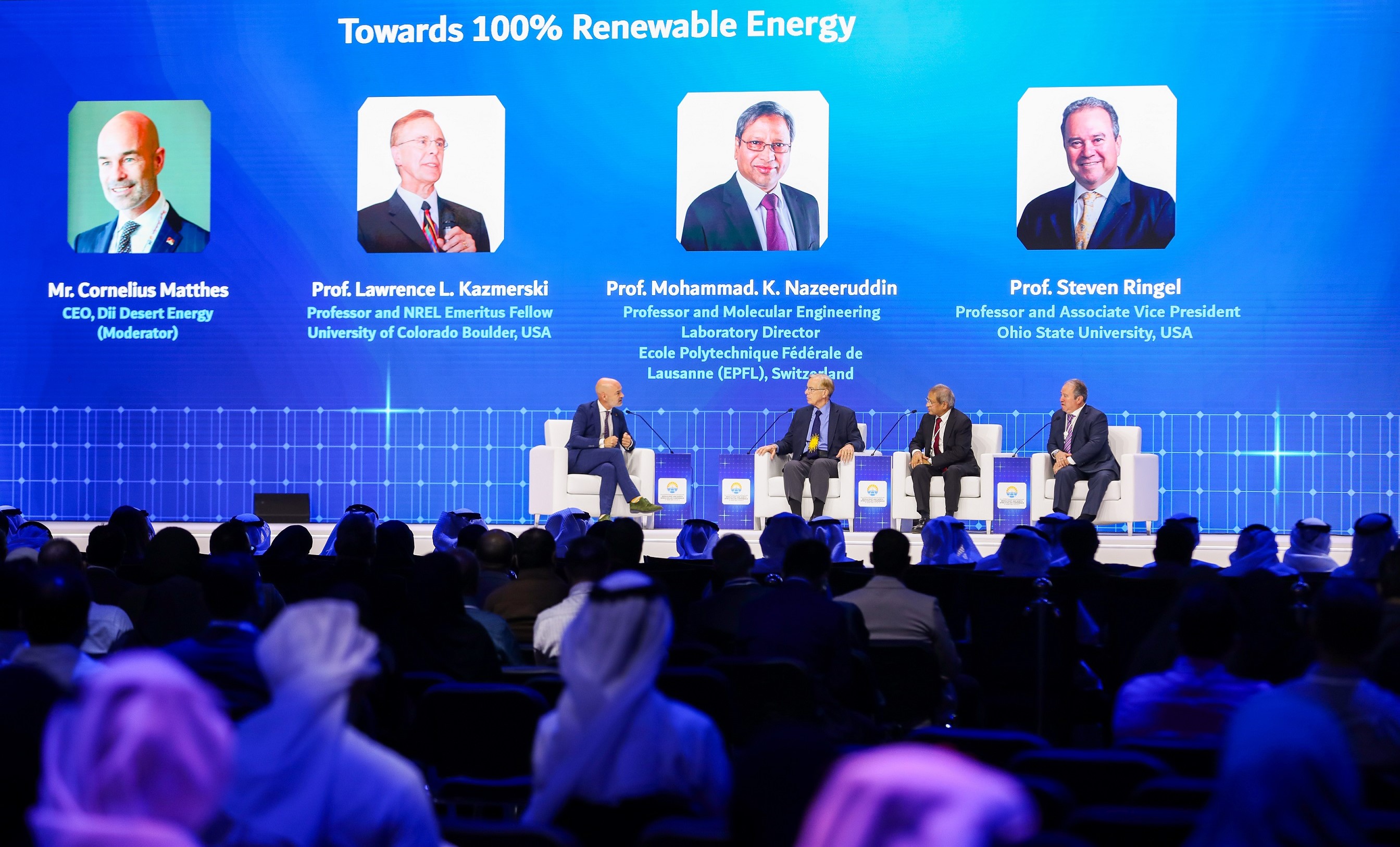MENA SC 2023 shapes the next generation of solar energy technologies

Dubai, UAE, 18 November 2023: The first Middle East and North Africa Solar Conference (MENA SC) hosted prominent global speakers, researchers, and specialists to discuss unconventional and new concepts for future solar photovoltaic technologies and other topics that shape the next generation of solar energy technologies.
Dubai Electricity and Water Authority (DEWA) organised MENA SC, the first scientific and technical conference of its kind in the region, specialising in solar energy systems, from 15 to 18 November 2023 at the Dubai World Trade Centre.
HE Saeed Mohammed Al Tayer, MD & CEO of DEWA, highlighted that the conference provides a global platform to propel the development of future PV technologies. It provided a space for exchanging knowledge and experiences and discussing research papers and scientific breakthroughs in this field.
“MENA SC consolidates DEWA’s efforts in innovation and research and development in the solar and renewable energy sector. This is in line with the vision of His Highness Sheikh Mohammed bin Rashid Al Maktoum, Vice President and Prime Minister of the UAE and Ruler of Dubai, to strengthen Dubai’s position as a global hub for research and development in the sustainability sectors. This also supports the Dubai Net Zero Carbon Emissions Strategy 2050. The conference enhanced efforts to accelerate climate work and the energy transition and advance the path towards realising carbon neutrality for a brighter and more sustainable future for generations to come. MENA SC mainly focuses on ways to face the challenges of climate change and pollution worldwide, especially in the MENA region. It also highlighted technologies to mitigate these effects and accelerate the enhancement of solar PV systems in performance, efficiency, reliability, and accountability,” added Al Tayer.
The research papers presented at MENA SC 2023 covered a range of topics, including unconventional and new concepts for future technologies; silicon photovoltaic materials and devices; Perovskite and organic materials and solar cells; PV module and system reliability in the MENA region; solar resources for PV and forecasting; and power electronics and grid integration, all of which are key in accelerating the green energy transformation.
Unconventional and new concepts for future technologies
The research papers presented at the conference discussed basic physical, chemical, and optical phenomena, in addition to studies of new materials, innovative device designs, and photon management methods. The conference discussed the efficient coupling of the incident light into the solar cell with minimum loss, and effective use of the energy imparted by each photon. It also discussed new materials for all parts of the photovoltaic device, nanostructures, novel multijunction architectures, advanced optical management approaches, new materials and synthesis processes, and unconventional conversion mechanisms. Research topics also covered advanced and exceptional technologies to solve space-related issues and channelling energy efficiently. This also covered Concentrated Solar Power (CSP) as well, which has gained momentum in the last few years due to its high efficiencies, and attractive storage capacity which can serve as an efficient source of energy during night hours. Several facets of CSP enhance understanding of the solar receiver design, modelling and system applications of thermal energy conversion and storage.
Unconventional Contact and Absorber Materials; Novel Deposition Techniques
The conference highlighted the development of novel and unconventional contact and absorber materials and processing techniques for improving the performance, functionality, reliability, and scalability of PV devices. Topics of interest included new materials for PV, including Earth-abundant absorber materials, new contact materials, including carrier selective contacts, transparent conducting materials, and transparent conducting oxides. It focused on the role of design and selection of new materials in enabling applications in single crystalline, thin film, multijunction, and nanostructured PV devices, or in enabling an entirely new device class independently. Papers at MENA SC also described theoretical and/or experimental development of Perovskite-inspired materials, besides machine learning-driven materials.
Device Architectures for Advanced Light Management and Spectral Shaping
MENA SC highlighted the use of modifications to the geometry of materials and devices that can be used to realise advances in performance. It also covered new material or device geometries, from nanostructured and quantum dot materials to three-terminal tandems; and materials and multilayers that form layered structures. The conference also discussed ways to achieve high power conversion efficiency for solar cells and incoming photons.
Unique Technologies for Space-related applications
The conference covered all aspects of photovoltaic power generation subjected to extreme environments, including space and near-space environments. The research papers dealt with the entire breadth of PV under these conditions, from cell and material technologies to complete systems. The conference also discussed topics within the area like space solar cells and space PV systems, which include solar panel and blanket technology, as well as solar arrays and structures. It focused on ways to face different challenges, such as typical long lifetimes, combined with the inability to service the space PV systems, reliability and the correct prediction of the on-orbit performance.
Concentrated Solar Power Performance Analysis and Recent Discoveries
The conference attached great importance to CSP for its role in providing green electricity, green heat, and green hydrogen. It discussed its various systems, such as parabolic mirror channels, solar towers with surrounding heliostats, and linear Fresnel collectors. It also highlighted the energy storage mechanism and associated liquid properties.


